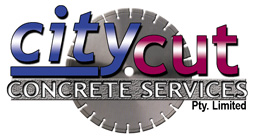Safety Requirements When Cutting Concrete
Concrete cutting despite being a labour-intensive task, it also a job that abounds with dangers to the staff performing it, but also to the environment. In order to keep the safety at high standards, minimize injuries and keep the pollution of the environment at an absolute minimum, some safety precautions and specialist equipment must be used. Also, every employee must have the training that ensures the proper use of the safety equipment and to be able to identify faulty items and prevent further use of them. The minimum standard of safety equipment includes: respirators, safety glasses, hard hat, high visibility clothing, hearing protection and protective footwear.
Respirators provide protection for the respiratory system by preventing inhalation of irritating, dangerous and sometimes toxic dust derived by concrete cutting. The proper type of respirator will vary on the exposure. During concrete cutting operations, respirator protection usually is used to provide protection from dusts and mists. Employees who wear respirators must be trained according to a safety program that details respirator fit, testing, medical evaluations, and training in use and limitations of the respirators.
Safety glasses are the minimum safety requirement that must be obeyed at all times. This is due to the possibility of small fragments of concrete chipping off and flying directly into the eyes causing permanent sight damage. The safety glasses must be shatter proof upon impact, should not distort images and should possess UV protection for working outdoors.
Hard hats are another key safety equipment. A hard hat consists of two features: the shell and the suspension. The shell of the hard hat will provide protection from falling objects and serve as a barrier. The suspension of the hard hat will absorb and distribute the impact force across the crown of the skull. In doing so, the impact force is lessened substantially.
High visibility clothing is a must especially for workers who work outdoors near heavy traffic. The requirements for the special colour of the clothing may vary depending on operation. For example, high-visibility orange for workers and high-visibility lime green for flaggers.
Hearing protection and Concrete cutting technology is a common sense when using heavy duty machinery that produces a lot of noise. The noise level reduction values may vary between earplugs and earmuffs. When using earplugs, they should be changed often to limit the potential for ear infection from inserting plugs directly into the ear. Employee training should include proper insertion of the earplug into the ear canal. For the best protection, the employee should pull up slightly on the top of the ear with one hand to straighten the ear canal while inserting the earplug. This method will provide a better fit and overall noise reduction.
Earmuffs also can be very effective, but their effectiveness may be reduced when employees are wearing safety glasses because it may affect the fit over the ear. It is important to note that safety glasses are recommended at all times.
Protective footwear may vary based on the operation. Solid over the-ankle, leather work boots should always be worn when cutting concrete. They provide protection from abrasions and twisted ankles. If the removal of concrete sections is required, safety toe or metatarsal protective footwear is needed.

